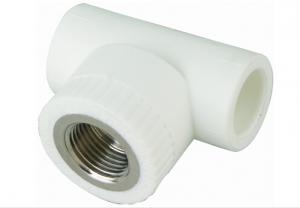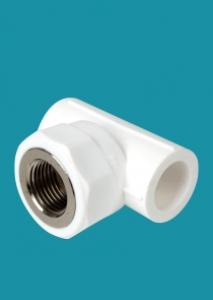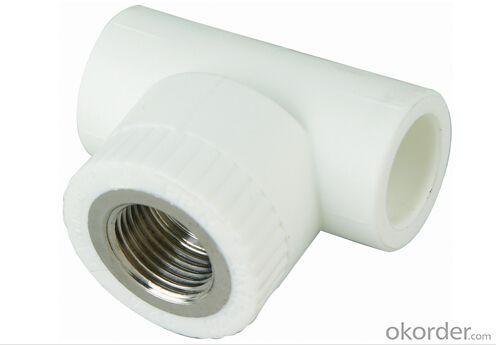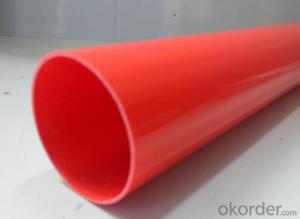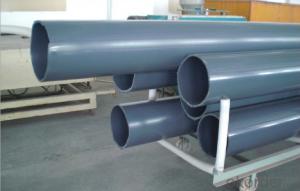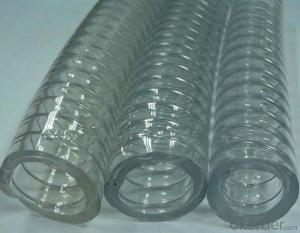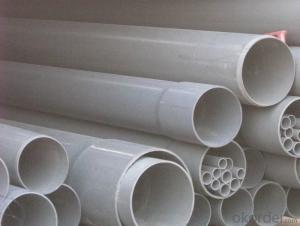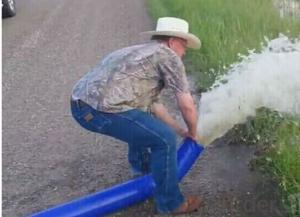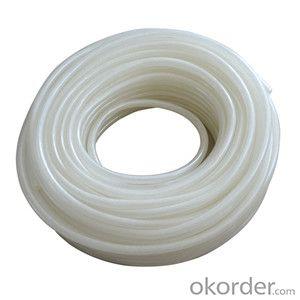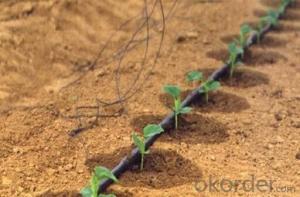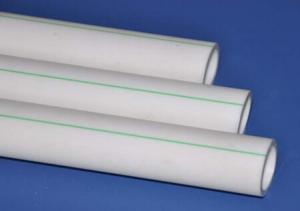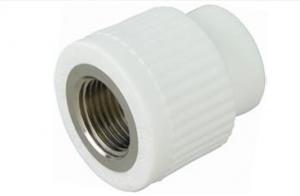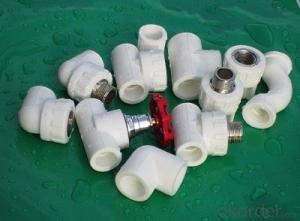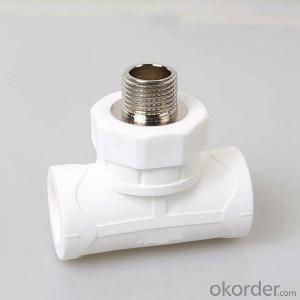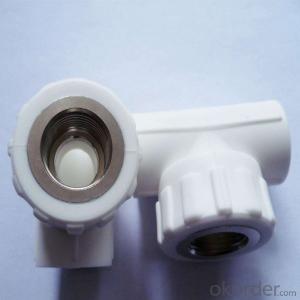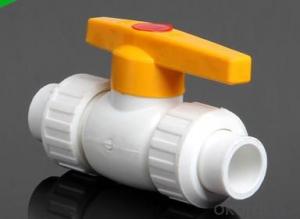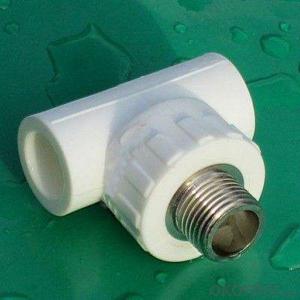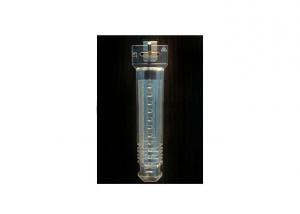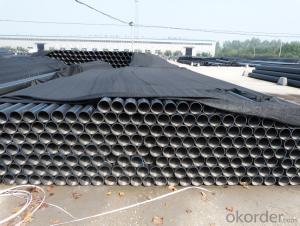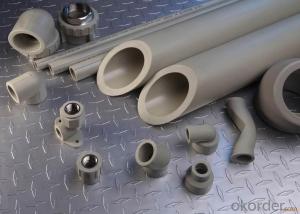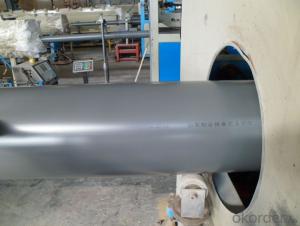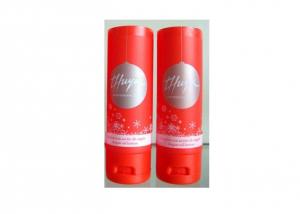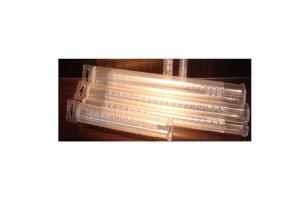Plastic Tubes PPR Female Plumbing Tee Compliant with Food Hygiene Regulations and Non-Toxic
- Loading Port:
- Tianjin
- Payment Terms:
- L/C,T/T
- Min Order Qty:
- 300 pc
- Supply Capability:
- 100000 pc/month
OKorder Service Pledge
OKorder Financial Service
You Might Also Like
Product Features
1. Corrosion resistance
PPR pipes and fittings can resistant to most chemical corrosion; it can withstand PH value range 1-14 high concentration of acid and alkali corrosion over a wide temperature range.
2. Installation performance
PPR pipe PPR pipe is light in weight, and the operation installation is easy, which make it available to weld again. It is very important that pipe and pipe fittings can be welded together in seconds with a simple tool. Compared to traditional connection methods it can save 40%~50% of the time.
3. Safety Indicators
The basic component of PPR is carbon and hydrogen which is simple. It keeps in line with food hygiene regulations, non-toxic. If you use PPR pipe, there will no dirt in the inner wall or “secondary water pollution” caused by rust any more.PPR pipe ,green building materials, is more suitable for transporting drinking water.
Advantages of PPR pipe
1. Maximum operating temperature can up to 95℃; it can work in a long term under the condition of 70℃ and 1.0Mpa.
2. PPR pipe density is only 1/8 of metal pipe; pressure resistance strength test is up 5Mpa, with good toughness, impact resistance.
3. Inner diameter of PPR pipe is little bigger than that of pipe fittings, which can ensure not to increase the resistance to fluid flow.
4. Inner wall of PPR pipe is smooth, no rust, no scaling, small fluid resistance
5. PPR pipe has excellent insulation properties, can significantly reduce the vibration and noise caused by the flow of liquid.
6. PPR pipe energy consumption is only 20% of steel pipe; its thermal coefficient is also only 1/200 of steel pipe, reducing heat loss greatly.
7. PPR pipe is poor electrical conductor material, which can avoid galvanic corrosion phenomena.
8. With poor thermal conductivity, PPR pipe can reduce condensation.
9. PPR pipes, fittings are recyclable.
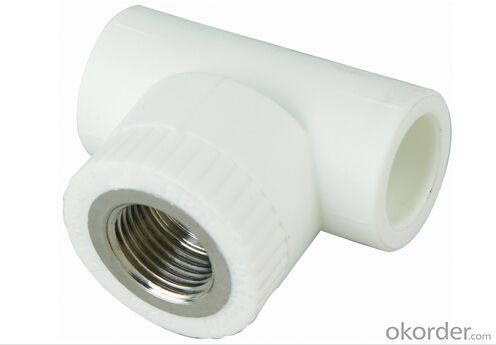
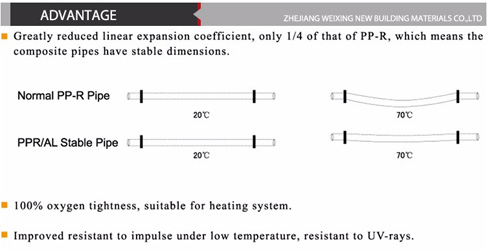
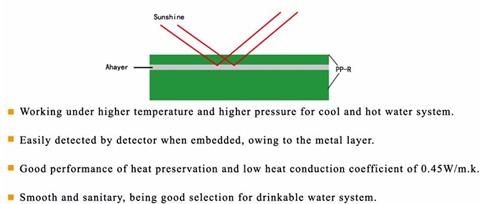
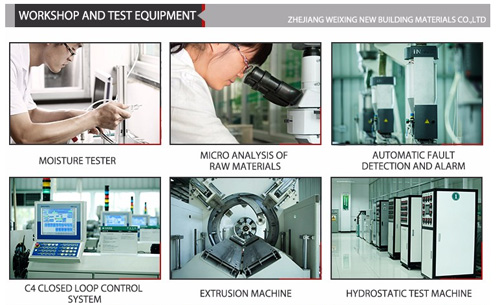
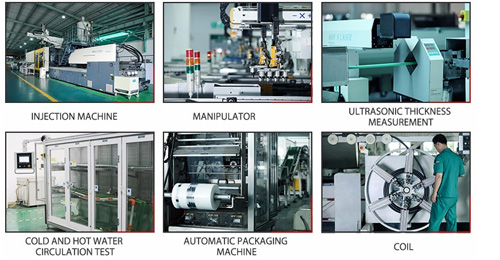

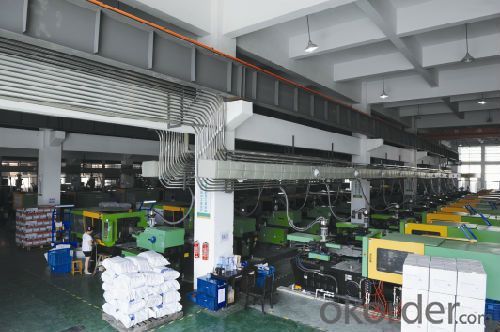
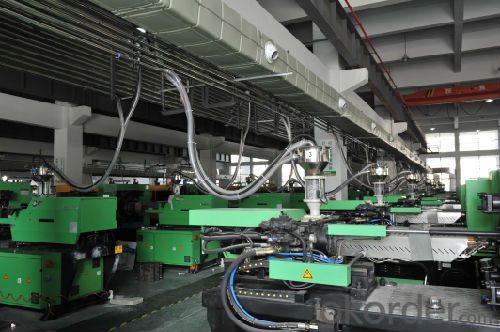
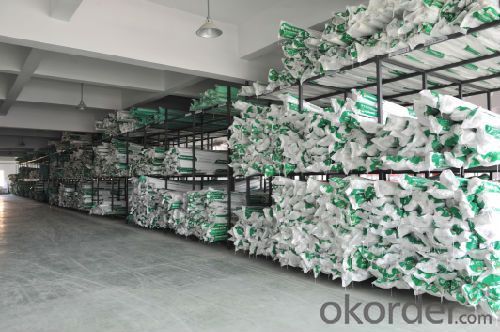
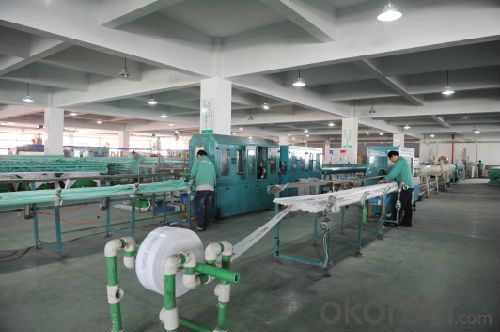
Application
1. Hot and cold drinking water supply system of civil and industrial buildings
2. Clean, pure water piping system
3. Beverage production and transport systems
4. Industrial liquid delivery system
5. Central air conditioning system
6. Hot water circulation Heating System
7. Compressed air piping system
8. Garden and greenhouse irrigation systems
Development of PPR Pipes
Compared with traditional cast iron pipe, galvanized steel pipes, cement pipes and other pipes, PPR pipes have the advantages of energy-saving, environmental protection, high-strength lightweight, corrosion-resistant, smooth wall does not scale, simple construction and maintenance and long lasting. PPR pipe and fittings, plastic water pipe are widely used in building water supply and drainage, urban and rural construction, municipal, industrial and agricultural areas of water supply and drainage, city gas, electricity and cable jacket, industrial fluid transport, agriculture and irrigation.
In recent years, with the increasing market demand of construction, municipal engineering, hydraulic engineering, agricultural and industrial, Chinese ppr pipes manufacturers have shown a trend of rapid development. According to the survey, plastic pipe production capacity of which in 2009 was 5.804 million tons increased of 18.9% in 2010, from January to September of plastic pipe production of 5.528 million tons, an increase of 28.23%. Meanwhile, with consumer products, environmental protection, health, durability and other aspects of quality requirements continue to increase, China's plastic pipe production increased at the same time, polyethylene pipe product quality has improved continuously, the industry continues to accelerate technological progress, growing scale enterprises brand new materials, new structures are emerging varieties, advanced system design concepts emerging, product functionality more obvious, further broaden the application areas. Analysts believe that China is currently the proportion of plastic pipe market share in the entire pipeline has exceeded 30%.
By 2015, China in new construction, renovation, expansion project, 85% of the building drainage pipes plastic water pipe, building rainwater drains 80% of plastic pipes, plastic water pipe use urban drainage channel reaches 50 percent, building water supply, hot water supply and heating tube 85% of the plastic pipe, city water pipe (DN400mm or less) 80% of the plastic tube, rural water supply line 90% of the plastic water pipe city gas plastic pipe (low pressure pipe) volume applications up to 40%, building wire threading jacket pipe 90% of the plastic tube. It is predicted that China ppr pipe and fittings production during the second five will remain at about 10% growth rate, by 2015, China is expected to produce plastic pipe will be close to 12 million tons of plastic pipe market share in China in more than various types of pipes 60%.
PP-R pipes also called random copolymer polypropylene. It uses random copolymer polypropylene by extrusion become pipe, injection molded into the tube. In the early 1990s on European, PP-R pipes are the development and application of new plastic pipe products. PP-R is the late 1980s, using a gas phase copolymerization process so that the molecular chain of about 5% PP random evenly polymerization (random copolymer) and a new generation of pipe materials. High strength, impact resistance and has good long-term creep performance. At the same time the ppr fittings have excellent resistance to chemical corrosion, at room temperature, insoluble in any known solvents, so in addition to home improvement, chemical plants and other places more suitable for transportation of chemical fluids. Life of up to 50 years, the market has not any cheaper materials can replace it.
- Q: Can plastic tubes be used for crafts or DIY projects?
- Yes, plastic tubes can definitely be used for crafts or DIY projects. They are versatile and can be easily cut, shaped, and decorated according to your needs. Whether it's creating jewelry, storage containers, or even small sculptures, plastic tubes provide a convenient and affordable option for various creative projects.
- Q: It's kind of like a slushy. What's it called?
- I think it's called Flavor-Ice, but there may be different brands.
- Q: Can plastic tubes be used for bottling beverages?
- Yes, plastic tubes can be used for bottling beverages.
- Q: What is the average lifespan of plastic tubes?
- The average lifespan of plastic tubes can vary depending on factors such as the type of plastic used, the conditions they are exposed to, and their usage. However, with proper care and maintenance, plastic tubes can typically last for several years to decades.
- Q: What are the cost considerations when using plastic tubes?
- Some of the cost considerations when using plastic tubes include the initial cost of the tubes themselves, transportation and storage costs, as well as any additional costs associated with customization or branding. Maintenance and repair costs may also be a factor, depending on the intended use of the tubes. Additionally, the cost of waste management or recycling should be taken into account when considering the overall cost of using plastic tubes.
- Q: Can plastic tubes be used for swimming pool covers?
- No, plastic tubes are not typically used for swimming pool covers.
- Q: How to clean the plastic tube of water dispenser for water dispenser?
- The automatic cleaning function is that the water dispenser is provided with an automatic cleaning nozzle, and when the cleaning is needed, the water discharging motor starts, and the cleaning part is cleaned by the jet stream.
- Q: They live in an aquarium that has an attachment on top that allows for a second floor. There are plastic tubes that run between the two levels. They both constantly scratch violently at them, and i dont want them to break the tubes. Does anyone know why they're doing this? And what can i do to stop them? Maybe there's something else i can give them to scratch?
- crap on them then they will die and they wont scracht any more
- Q: what do you call the plastic tubes used for pet water bottles, and where can you find them?
- rubber tubes? you can find them at any pet supply store.
- Q: Are plastic tubes suitable for industrial packaging?
- Yes, plastic tubes are suitable for industrial packaging as they offer various advantages such as durability, flexibility, and resistance to moisture, chemicals, and impact. They can be easily customized to meet specific packaging requirements and are cost-effective compared to other packaging materials. Additionally, plastic tubes provide excellent protection to the packaged goods and can be efficiently labeled and stored, making them a reliable choice for industrial packaging.
Send your message to us
Plastic Tubes PPR Female Plumbing Tee Compliant with Food Hygiene Regulations and Non-Toxic
- Loading Port:
- Tianjin
- Payment Terms:
- L/C,T/T
- Min Order Qty:
- 300 pc
- Supply Capability:
- 100000 pc/month
OKorder Service Pledge
OKorder Financial Service
Similar products
Hot products
Hot Searches
Related keywords
